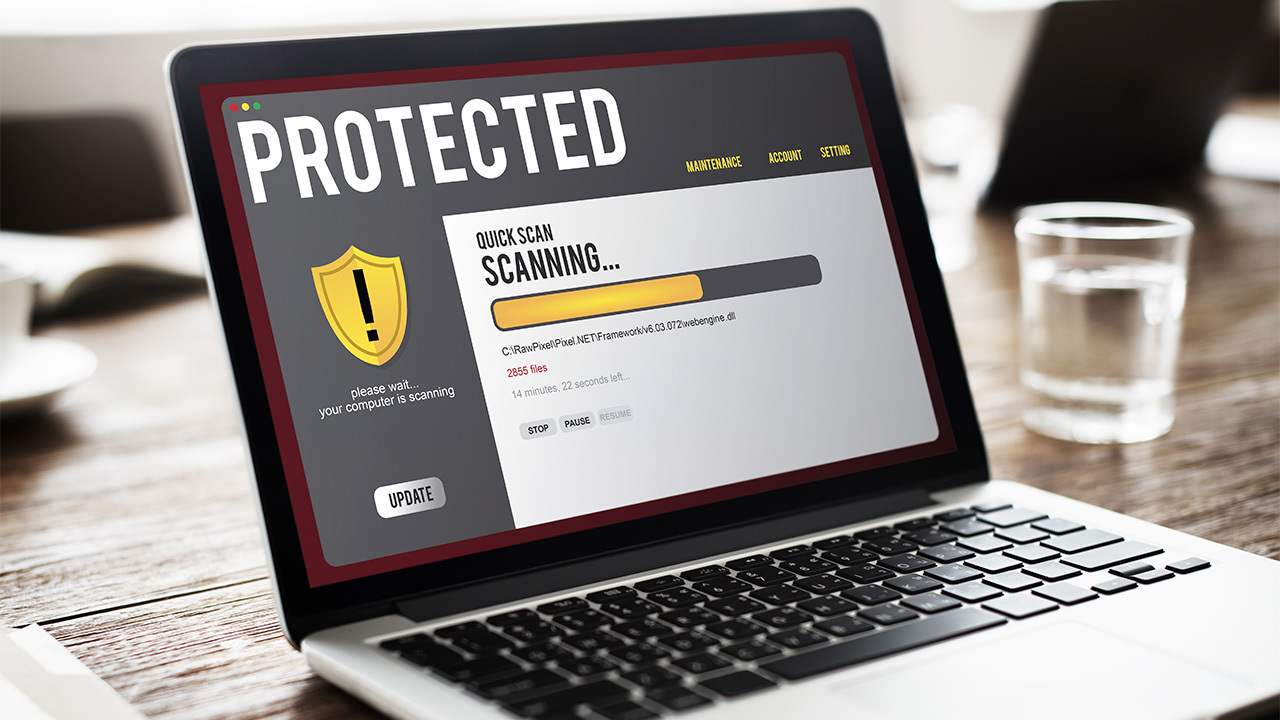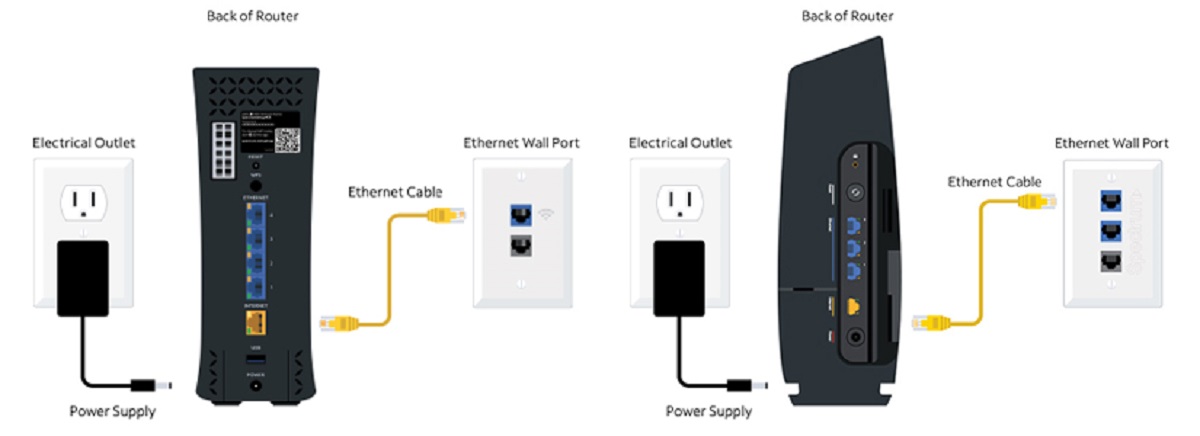Understanding Open Hotspots
Open hotspots refer to public Wi-Fi networks that are accessible to anyone within their range. These hotspots are commonly found in places like coffee shops, airports, hotels, and libraries, providing convenient internet access to patrons and visitors. Unlike secured networks that require a password for access, open hotspots are freely available for anyone to connect to, making them convenient but potentially risky for users.
When you connect to an open hotspot, your device communicates with the network, allowing you to access the internet and perform various online activities. However, the lack of encryption and security measures in open hotspots makes them susceptible to potential threats. Unlike home or office networks, open hotspots do not provide the same level of protection for your data and online activities.
Due to their open nature, these hotspots are more vulnerable to malicious activities, such as eavesdropping, data interception, and unauthorized access to connected devices. Hackers and cybercriminals may exploit the lack of security in open hotspots to intercept sensitive information transmitted over the network, including passwords, financial data, and personal details.
Understanding the dynamics of open hotspots is crucial for users to make informed decisions about their online activities. While these networks offer convenience and accessibility, users must be aware of the inherent risks associated with connecting to open hotspots. By understanding the potential vulnerabilities of open hotspots, individuals can take proactive steps to safeguard their personal information and maintain a secure online presence, even when utilizing public Wi-Fi networks.
Risks of Using Open Hotspots
When utilizing open hotspots, individuals are exposed to various risks that stem from the inherent vulnerabilities of these public Wi-Fi networks. Understanding these risks is essential for making informed decisions about internet usage in such environments. Here are the potential threats associated with using open hotspots:
-
Data Interception: Open hotspots lack encryption, making it easier for cybercriminals to intercept data transmitted between devices and the network. This means that sensitive information, such as login credentials, financial details, and personal communications, can be captured by malicious actors without the user's knowledge.
-
Man-in-the-Middle Attacks: Hackers can exploit open hotspots to conduct man-in-the-middle attacks, where they intercept communication between the user's device and the intended destination. This allows them to eavesdrop on sensitive information or even manipulate the data being transmitted, posing a significant threat to user privacy and security.
-
Malware Distribution: Open hotspots can serve as breeding grounds for the distribution of malware. Cybercriminals may set up fake Wi-Fi networks or inject malicious code into the legitimate hotspot, leading unsuspecting users to inadvertently download malware onto their devices. Once infected, these devices can be compromised, leading to potential data loss or unauthorized access.
-
Phishing and Spoofing: In an open hotspot environment, cybercriminals may deploy phishing and spoofing techniques to deceive users into disclosing sensitive information or visiting fraudulent websites. This can result in identity theft, financial fraud, or unauthorized access to personal accounts, posing significant risks to the user's digital security.
-
Unsecured Network Resources: Open hotspots lack the network segregation and access controls typically found in secure environments. This exposes users to potential threats from other connected devices, as malicious actors may attempt to exploit vulnerabilities to gain unauthorized access to sensitive information or launch attacks within the network.
Understanding these risks underscores the importance of exercising caution when using open hotspots. By being aware of the potential threats, individuals can take proactive measures to mitigate risks and safeguard their online activities while connected to public Wi-Fi networks.
Tips for Safely Using Open Hotspots
-
Use a Virtual Private Network (VPN): Employing a reputable VPN service encrypts your internet traffic, providing an additional layer of security when connected to open hotspots. By routing your data through a secure server, a VPN helps protect your sensitive information from potential eavesdropping and interception by unauthorized parties.
-
Enable Two-Factor Authentication (2FA): Utilize two-factor authentication for your online accounts, adding an extra security measure beyond passwords. In the event that your login credentials are compromised while using an open hotspot, 2FA helps prevent unauthorized access by requiring a secondary verification method, such as a unique code sent to your mobile device.
-
Update Device and Software: Ensure that your devices and applications are updated with the latest security patches and software versions. Regular updates help address known vulnerabilities, reducing the risk of exploitation by cyber threats while connected to open hotspots.
-
Limit Sensitive Transactions: Avoid conducting sensitive transactions, such as online banking or making purchases with credit cards, while connected to open hotspots. If such activities are necessary, consider using cellular data or a trusted secured network to minimize exposure to potential risks.
-
Verify Network Authenticity: Before connecting to an open hotspot, verify its authenticity with the establishment providing the Wi-Fi service. Confirm the network name and login procedures to avoid falling victim to rogue hotspots or fake networks set up by malicious actors.
-
Use HTTPS and Secure Websites: When browsing the web, prioritize websites that utilize HTTPS encryption, especially for login pages and sensitive transactions. Look for the padlock icon in the address bar, indicating a secure connection, and exercise caution when accessing non-secure sites while on open hotspots.
-
Turn off Automatic Wi-Fi Connectivity: Disable the automatic connection feature on your devices to prevent them from connecting to open hotspots without your knowledge. This gives you greater control over when and where you choose to connect, reducing the likelihood of unintentionally exposing your data to potential threats.
-
Monitor Device Activity: Stay vigilant about your device's activity while connected to open hotspots. Be mindful of any unexpected pop-ups, requests for sensitive information, or unusual network behavior, as these could be indicators of potential security risks or attempted cyber attacks.
By implementing these tips, individuals can enhance their security posture and minimize the inherent risks associated with using open hotspots. Prioritizing personal data protection and exercising caution while accessing public Wi-Fi networks are essential practices for maintaining a safe and secure online experience.
Identifying Risky Websites
Identifying risky websites is crucial for maintaining online safety, especially when accessing the internet through open hotspots. By recognizing the characteristics and indicators of potentially hazardous websites, individuals can make informed decisions about their online interactions and minimize the risk of falling victim to cyber threats. Here are key factors to consider when identifying risky websites:
1. Suspicious URLs and Domain Names
Risky websites often have deceptive or irregular URLs and domain names. Users should be cautious of misspelled domain names, extra or hyphenated words, and uncommon domain extensions, as these may indicate attempts to mimic legitimate websites for fraudulent purposes.
2. Lack of HTTPS Encryption
Websites that do not utilize HTTPS encryption for transmitting data pose a higher risk to users' privacy and security. When browsing, individuals should prioritize websites with HTTPS protocol, especially when entering sensitive information such as login credentials or financial details.
3. Unreliable Content and Design
Risky websites may exhibit poor design, contain numerous pop-up ads, or display irrelevant or low-quality content. Users should be wary of websites with excessive advertising, spelling errors, or unprofessional layouts, as these could be indicators of malicious intent or untrustworthiness.
4. Unsecured Login and Payment Pages
Websites that request login credentials or payment information without providing a secure connection are highly risky. Users should avoid entering sensitive data on such websites, as it can be intercepted by malicious actors, leading to potential identity theft or financial fraud.
5. Phishing Indicators
Risky websites often employ phishing tactics to deceive users into disclosing personal information. Individuals should be cautious of unexpected requests for sensitive data, alarming messages prompting urgent action, or suspicious prompts to download files or software.
6. Reputation and Reviews
Checking the reputation and user reviews of a website can provide valuable insights into its trustworthiness. Users should be diligent in researching the credibility and legitimacy of unfamiliar websites, especially when considering transactions or sharing personal information.
7. Browser Security Warnings
Modern web browsers often display security warnings for potentially risky websites. Users should heed these warnings, which may indicate that the site is known for phishing, malware distribution, or other malicious activities.
By being mindful of these indicators and exercising caution when encountering unfamiliar websites, individuals can proactively identify and avoid risky online destinations, thereby reducing their exposure to potential cybersecurity threats. This heightened awareness empowers users to make informed choices about their online interactions, contributing to a safer and more secure browsing experience, particularly when utilizing open hotspots.
Avoiding Risky Websites on Open Hotspots
When using open hotspots, it is paramount to exercise vigilance and caution when navigating the online landscape to avoid potentially risky websites. The inherent vulnerabilities of open hotspots make users more susceptible to cyber threats, emphasizing the need for proactive measures to steer clear of hazardous online destinations. Here are essential strategies for avoiding risky websites while connected to open hotspots:
1. Prioritize HTTPS Encryption
When browsing the web on open hotspots, prioritize websites that employ HTTPS encryption. Secure connections using HTTPS protocol help protect sensitive data from interception and ensure a safer browsing experience. Look for the padlock icon in the address bar, indicating a secure connection, especially when accessing login pages or conducting transactions.
2. Verify Website Authenticity
Before interacting with a website while connected to an open hotspot, verify its authenticity and legitimacy. Ensure that the website's URL matches the intended destination, and be cautious of deceptive domain names or unfamiliar web addresses. Confirm the website's identity and trustworthiness to mitigate the risk of falling victim to phishing or spoofing attempts.
3. Exercise Caution with Login Credentials and Payments
Avoid entering login credentials or financial information on websites that do not provide a secure and encrypted connection. Unsecured login and payment pages pose significant risks, as sensitive data transmitted over open hotspots can be intercepted by malicious actors. Exercise discretion and refrain from sharing personal information on unsecured websites.
4. Stay Informed about Phishing Tactics
Be mindful of phishing indicators and deceptive tactics commonly employed by risky websites. Watch out for unexpected requests for sensitive data, alarming messages prompting urgent action, or suspicious prompts to download files or software. By remaining vigilant and informed about potential phishing attempts, users can avoid falling prey to fraudulent schemes.
5. Leverage Browser Security Warnings
Pay attention to security warnings issued by web browsers when accessing unfamiliar websites. Modern browsers often provide alerts for potentially risky websites, cautioning users about potential security threats. Heed these warnings and refrain from interacting with websites flagged for malicious activities or suspicious content.
6. Seek Reliable Sources and Reviews
When exploring unfamiliar websites on open hotspots, seek out reliable sources and user reviews to assess the credibility and trustworthiness of the site. User feedback and reputable review platforms can offer valuable insights into the reputation and legitimacy of websites, aiding in the decision-making process when determining the safety of online destinations.
By implementing these strategies and exercising prudence when engaging with online content, individuals can navigate open hotspots with heightened awareness and reduce the likelihood of encountering risky websites. These proactive measures contribute to a more secure online experience, safeguarding users against potential cybersecurity threats while leveraging the convenience of public Wi-Fi networks.
Conclusion
In conclusion, the widespread availability of open hotspots presents both convenience and potential risks for individuals seeking internet connectivity in public spaces. While open hotspots offer accessibility and flexibility, they also expose users to various cybersecurity threats, including data interception, man-in-the-middle attacks, and potential exposure to malware and phishing attempts. Understanding the risks associated with open hotspots is paramount for individuals to navigate these public Wi-Fi networks safely and securely.
To mitigate the inherent vulnerabilities of open hotspots, individuals can adopt proactive measures to safeguard their online activities. Utilizing a reputable Virtual Private Network (VPN) and enabling two-factor authentication (2FA) for online accounts are effective strategies for enhancing security while connected to open hotspots. Additionally, maintaining updated device and software configurations, limiting sensitive transactions, and verifying network authenticity contribute to a more secure online experience in public Wi-Fi environments.
Identifying and avoiding risky websites is a critical aspect of maintaining online safety while utilizing open hotspots. By recognizing indicators of potentially hazardous websites, such as suspicious URLs, lack of HTTPS encryption, and unreliable content, individuals can make informed decisions about their online interactions. Prioritizing secure connections, exercising caution with sensitive data, and leveraging browser security warnings empower users to steer clear of risky online destinations, reducing their exposure to potential cybersecurity threats.
Ultimately, the safety and security of individuals using open hotspots depend on a combination of awareness, proactive measures, and informed decision-making. By implementing the recommended strategies and remaining vigilant about online interactions, individuals can navigate open hotspots with greater confidence, minimizing the risks associated with public Wi-Fi networks.
As the digital landscape continues to evolve, the importance of maintaining cybersecurity awareness and taking proactive steps to protect personal information remains paramount. By embracing a proactive mindset and leveraging available tools and resources, individuals can enjoy the benefits of open hotspots while prioritizing their online safety and security. Through informed decision-making and prudent use of public Wi-Fi networks, individuals can embrace the convenience of open hotspots without compromising their digital well-being.

























